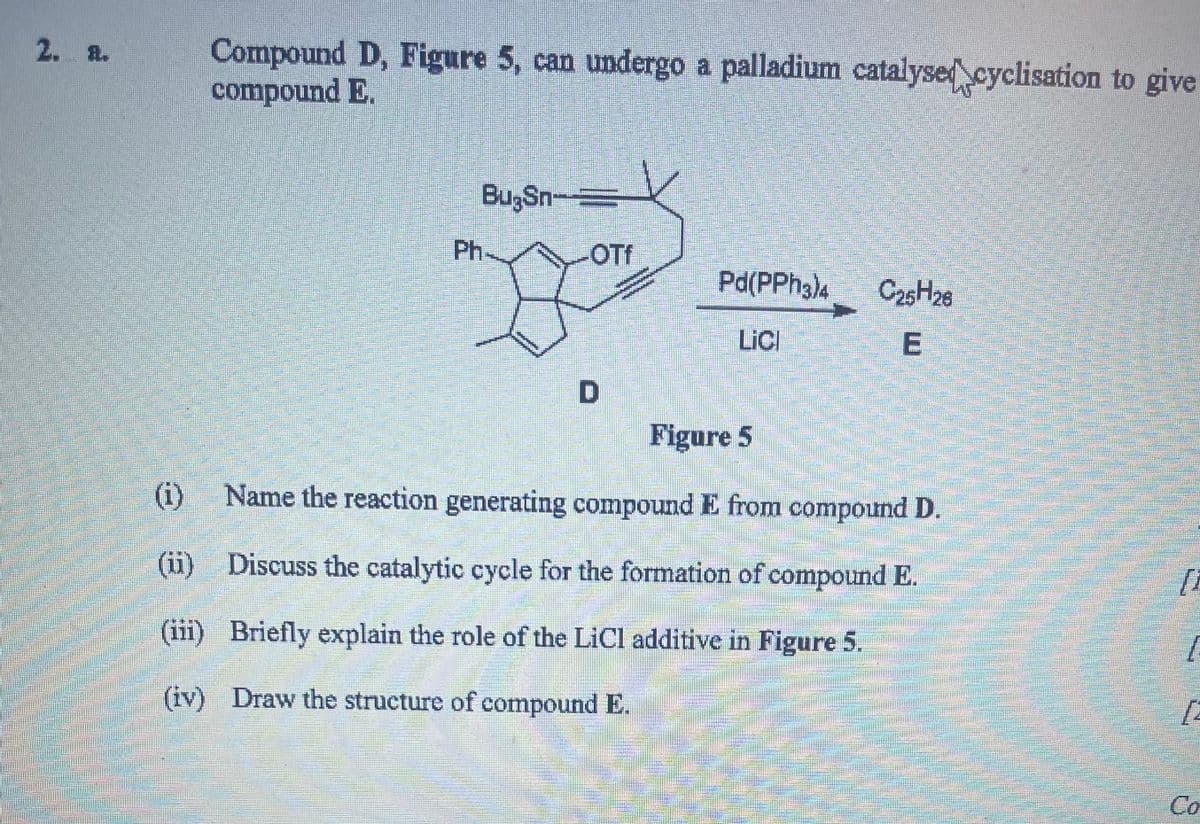2. a. Compound D, Figure 5, can undergo a palladium catalysed cyclisation to give compound E. BugSn Ph OTf Pd(PPh3)4 C25H26 LiCl E D Figure 5 (i) Name the reaction generating compound E from compound D. (ii) Discuss the catalytic cycle for the formation of compound E. (iii) Briefly explain the role of the LiCl additive in Figure 5. (iv) Draw the structure of compound E. [ [ Co
2. a. Compound D, Figure 5, can undergo a palladium catalysed cyclisation to give compound E. BugSn Ph OTf Pd(PPh3)4 C25H26 LiCl E D Figure 5 (i) Name the reaction generating compound E from compound D. (ii) Discuss the catalytic cycle for the formation of compound E. (iii) Briefly explain the role of the LiCl additive in Figure 5. (iv) Draw the structure of compound E. [ [ Co
Organic Chemistry: A Guided Inquiry
2nd Edition
ISBN:9780618974122
Author:Andrei Straumanis
Publisher:Andrei Straumanis
Chapter15: Radical Reactions
Section: Chapter Questions
Problem 11E
Related questions
Question

Transcribed Image Text:2. a.
Compound D, Figure 5, can undergo a palladium catalysed cyclisation to give
compound E.
BugSn
Ph
OTf
Pd(PPh3)4
C25H26
LiCl
E
D
Figure 5
(i)
Name the reaction generating compound E from compound D.
(ii) Discuss the catalytic cycle for the formation of compound E.
(iii) Briefly explain the role of the LiCl additive in Figure 5.
(iv) Draw the structure of compound E.
[
[
Co
Expert Solution
This question has been solved!
Explore an expertly crafted, step-by-step solution for a thorough understanding of key concepts.
Step by step
Solved in 2 steps with 2 images

Recommended textbooks for you

Organic Chemistry: A Guided Inquiry
Chemistry
ISBN:
9780618974122
Author:
Andrei Straumanis
Publisher:
Cengage Learning

Organic Chemistry: A Guided Inquiry
Chemistry
ISBN:
9780618974122
Author:
Andrei Straumanis
Publisher:
Cengage Learning